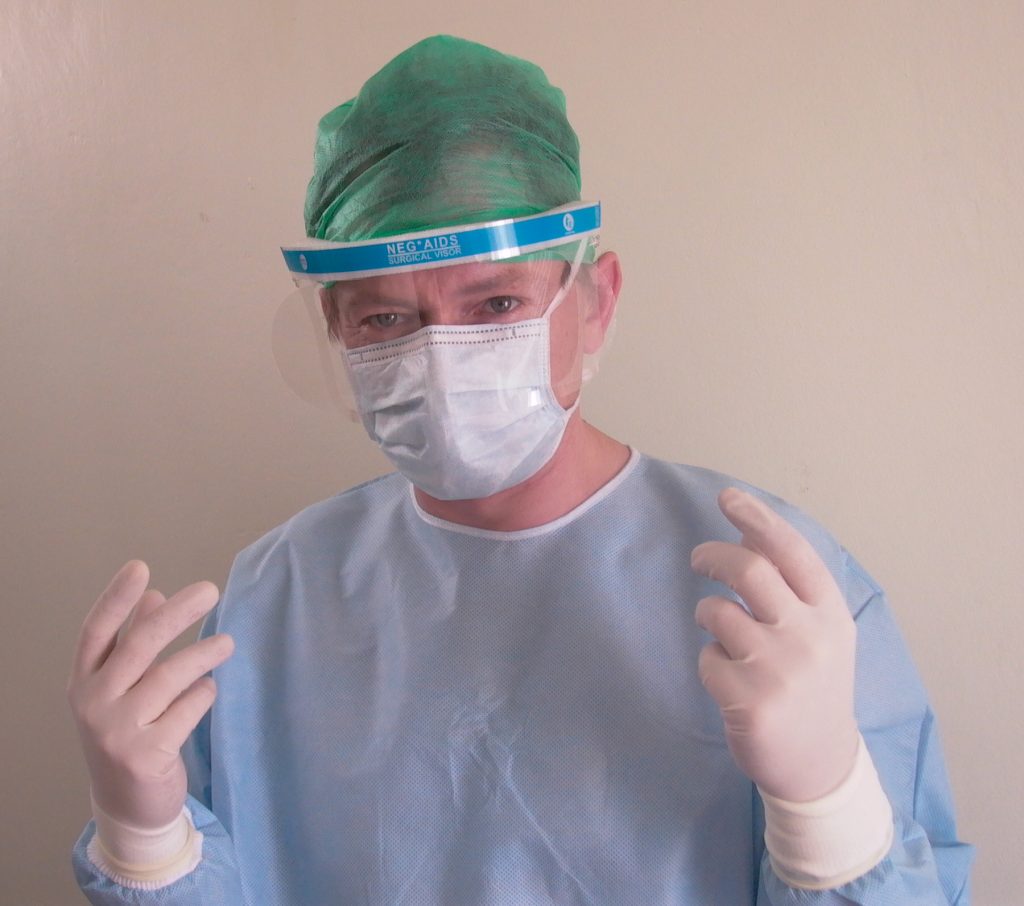 If your hurt on the job your recourse will typically be through the workers compensation system. Once you are in that system you must play by the rules and follow all orders of the court. If you don’t your employer does have recourse to seek to limit your benefits. Such a situation is demonstrated below wherein Mr. Sims refusal to attend adult education lead to a lesson learned in reduction of workers compensation benefits 101.
If your hurt on the job your recourse will typically be through the workers compensation system. Once you are in that system you must play by the rules and follow all orders of the court. If you don’t your employer does have recourse to seek to limit your benefits. Such a situation is demonstrated below wherein Mr. Sims refusal to attend adult education lead to a lesson learned in reduction of workers compensation benefits 101.
On October 17th, 2006, Preston Sims, an employee at Willis-Knighton Health System (WK) in Shreveport, Louisiana, sustained a back injury while at work resulting in a herniated disk at L5-S1. His doctor recommended lumbar surgery but his employer refused to pay the cost of the surgery. In September 2011, the Workers’ Compensation Judge (WCJ) ordered WK to approve and pay for the surgery, as well as continue to pay benefits to Mr. Sims. The Judge also signed an order of rehabilitation naming Lenora Maatouk as Mr. Sims’ vocational rehabilitation specialist. Sims was further ordered to participate in an adult education program to obtain his GED, with approval from his treating physician. In March 2012, Mr. Sims underwent a L4-5 and L5-S1 360-degree lumbar fusion, with placement of pedicle screws, followed by a right L5-S1 micro lumbar decompression.
As required by rehabilitation order, Mr. Sims took the adult educational program placement test on October 10, 2011 and on February 4th, 2013 and took the GED exam on January 27th, 2012 and November 8th, 2013 – to no avail. Mr. Sims’ rehabilitation specialist, Ms. Maatouk, informed him that he would need to take the placement exam again before being able to take the GED exam for a third time and additionally recommended that he take remedial classes for approximately six to nine months prior to the GED exam to better prepare himself. Mr. Sims did not enroll in any remedial courses.
 Louisiana Personal Injury Lawyer Blog
Louisiana Personal Injury Lawyer Blog


 If you are fortunate enough not to sustain serious injury as a result of someone else’s negligent actions, you may not realize that the compensation for your injuries can be apportioned and spread to other liable parties. Further still, if you were partially responsible for causing your own injury, you will likely see a reduction in the amount of damages you can recover. This was the case for a Ponchatoula High School band student who was injured while on a school-sponsored band trip in Tennessee.
If you are fortunate enough not to sustain serious injury as a result of someone else’s negligent actions, you may not realize that the compensation for your injuries can be apportioned and spread to other liable parties. Further still, if you were partially responsible for causing your own injury, you will likely see a reduction in the amount of damages you can recover. This was the case for a Ponchatoula High School band student who was injured while on a school-sponsored band trip in Tennessee. Sometimes what you do – or fail to do – before filing a lawsuit, can have a big impact on the final result, as Ross Lynch of Mandeville, Louisiana recently learned. Lynch owns property on Girard Street in Mandeville. Two of his neighbors own a lot directly adjacent to his property that is used by the City of Mandeville as a public parking lot. Overgrown grass and weeds were growing along the fence that separated the two lots. Until filing a lawsuit, Lynch never mentioned this problem to the neighbors or asked them to get rid of the overgrowth, which he considered to be an “obvious nuisance.”
Sometimes what you do – or fail to do – before filing a lawsuit, can have a big impact on the final result, as Ross Lynch of Mandeville, Louisiana recently learned. Lynch owns property on Girard Street in Mandeville. Two of his neighbors own a lot directly adjacent to his property that is used by the City of Mandeville as a public parking lot. Overgrown grass and weeds were growing along the fence that separated the two lots. Until filing a lawsuit, Lynch never mentioned this problem to the neighbors or asked them to get rid of the overgrowth, which he considered to be an “obvious nuisance.” On the afternoon of April 13, 2011, Officer J.M. Bassett of the Shreveport Police Department heard loud music coming from a motorcycle parked at 251 E. 72nd in Shreveport Louisiana. When Officer Bassett attempted to make contact with the man, Jessie Scott, Scott became hostile. As the situation escalated, Officer Bassett employed his Taser stun gun and handcuffed Mr. Scott, placing him into custody and transporting Mr. Scott to the police station. At the station, Mr. Scott complained of chest pain and Mr. Scott was taken to the Louisiana State University Health Sciences Center, where it was determined that Mr. Scott was having a heart attack.
On the afternoon of April 13, 2011, Officer J.M. Bassett of the Shreveport Police Department heard loud music coming from a motorcycle parked at 251 E. 72nd in Shreveport Louisiana. When Officer Bassett attempted to make contact with the man, Jessie Scott, Scott became hostile. As the situation escalated, Officer Bassett employed his Taser stun gun and handcuffed Mr. Scott, placing him into custody and transporting Mr. Scott to the police station. At the station, Mr. Scott complained of chest pain and Mr. Scott was taken to the Louisiana State University Health Sciences Center, where it was determined that Mr. Scott was having a heart attack.
 When a Louisiana resident is injured, she should consider filing a lawsuit against the person, group, or organization whose negligent or intentional acts were a proximate cause of the injury. However many potential plaintiffs do not realize that there may be several other persons and entities, not readily perceptible to the layman, who could be added as defendants and help ensure the plaintiff’s just compensation. Additional defendants can be extremely helpful when a plaintiff is going after substantial compensation because there will be more individuals to help pay out the sum should one or more parties be unable to pay a judgment due to bankruptcy or some other issue. Accordingly when Kenneth Truxillo was injured while attending pre-game festivities at Champions Square, the outdoor entertainment area bordering the Mercedes Benz Superdome, he did not just seek compensation from the owners of the Superdome but added several other defendants that he believed shared responsibility for his injuries.
When a Louisiana resident is injured, she should consider filing a lawsuit against the person, group, or organization whose negligent or intentional acts were a proximate cause of the injury. However many potential plaintiffs do not realize that there may be several other persons and entities, not readily perceptible to the layman, who could be added as defendants and help ensure the plaintiff’s just compensation. Additional defendants can be extremely helpful when a plaintiff is going after substantial compensation because there will be more individuals to help pay out the sum should one or more parties be unable to pay a judgment due to bankruptcy or some other issue. Accordingly when Kenneth Truxillo was injured while attending pre-game festivities at Champions Square, the outdoor entertainment area bordering the Mercedes Benz Superdome, he did not just seek compensation from the owners of the Superdome but added several other defendants that he believed shared responsibility for his injuries. Prescription is a legal doctrine that serves to prevent people from filing lawsuits after a specified lapse of time has passed. The public policy behind the idea of prescription is not to prevent people who have been harmed from receiving relief. Instead, prescription is meant to allow someone who has caused harm piece of mind knowing that they cannot be sued after the passage of a certain period of time. Prescription allows lawsuits to be brought up to a certain time after the events leading to a lawsuit have occurred. These time limits are commonly specified in the specific texts of the laws they serve.
Prescription is a legal doctrine that serves to prevent people from filing lawsuits after a specified lapse of time has passed. The public policy behind the idea of prescription is not to prevent people who have been harmed from receiving relief. Instead, prescription is meant to allow someone who has caused harm piece of mind knowing that they cannot be sued after the passage of a certain period of time. Prescription allows lawsuits to be brought up to a certain time after the events leading to a lawsuit have occurred. These time limits are commonly specified in the specific texts of the laws they serve.  When a person files a lawsuit, they generally have the right to be heard on their complaint. However, depending on when the lawsuit is brought, the action may be barred due to the lapse of time between the events leading to the lawsuit and the date the lawsuit is filed. This rule is known as prescription and the problems that can arise for plaintiffs from this rule can be seen in a lawsuit arising out of of Hammond, Louisiana.
When a person files a lawsuit, they generally have the right to be heard on their complaint. However, depending on when the lawsuit is brought, the action may be barred due to the lapse of time between the events leading to the lawsuit and the date the lawsuit is filed. This rule is known as prescription and the problems that can arise for plaintiffs from this rule can be seen in a lawsuit arising out of of Hammond, Louisiana. Fortune 500 company, Johnson & Johnson is in hot water over recent lawsuits contending that the medical device, pharmaceutical and consumer goods manufacturer was aware of an increased risk of ovarian cancer in women who regularly used talcum powder on or near their genital region, but failed to disclose those dangers to its Baby Powder consumers. The company’s Baby Powder product is talcum powder, or talc, based. Amidst the potential and pending lawsuits, which now number over 1,000 and span across the nation, arising against Johnson & Johnson, we broke down five things you should know about the recent and potential claims.
Fortune 500 company, Johnson & Johnson is in hot water over recent lawsuits contending that the medical device, pharmaceutical and consumer goods manufacturer was aware of an increased risk of ovarian cancer in women who regularly used talcum powder on or near their genital region, but failed to disclose those dangers to its Baby Powder consumers. The company’s Baby Powder product is talcum powder, or talc, based. Amidst the potential and pending lawsuits, which now number over 1,000 and span across the nation, arising against Johnson & Johnson, we broke down five things you should know about the recent and potential claims.